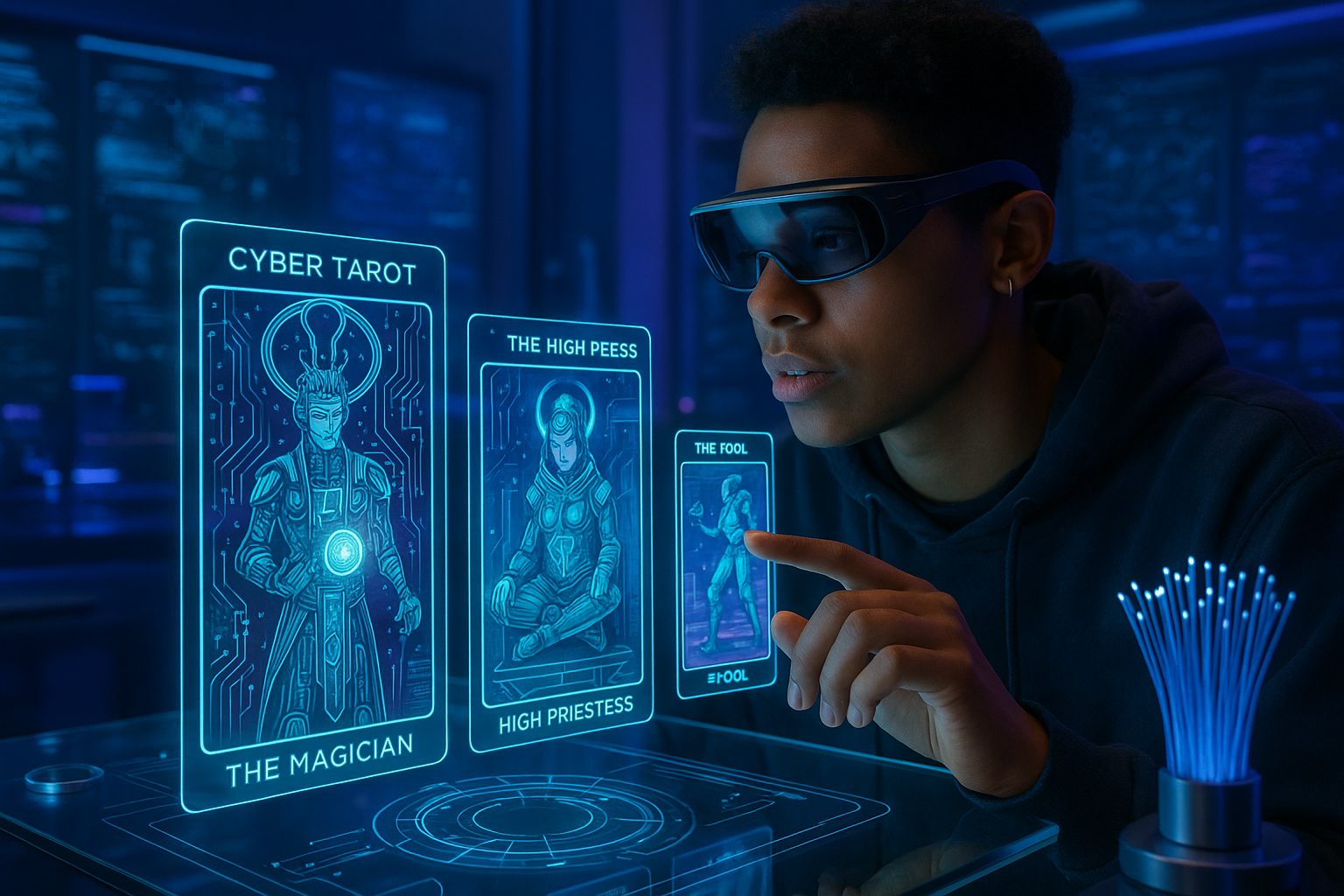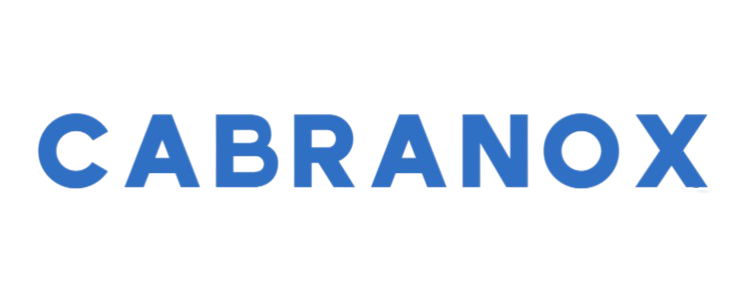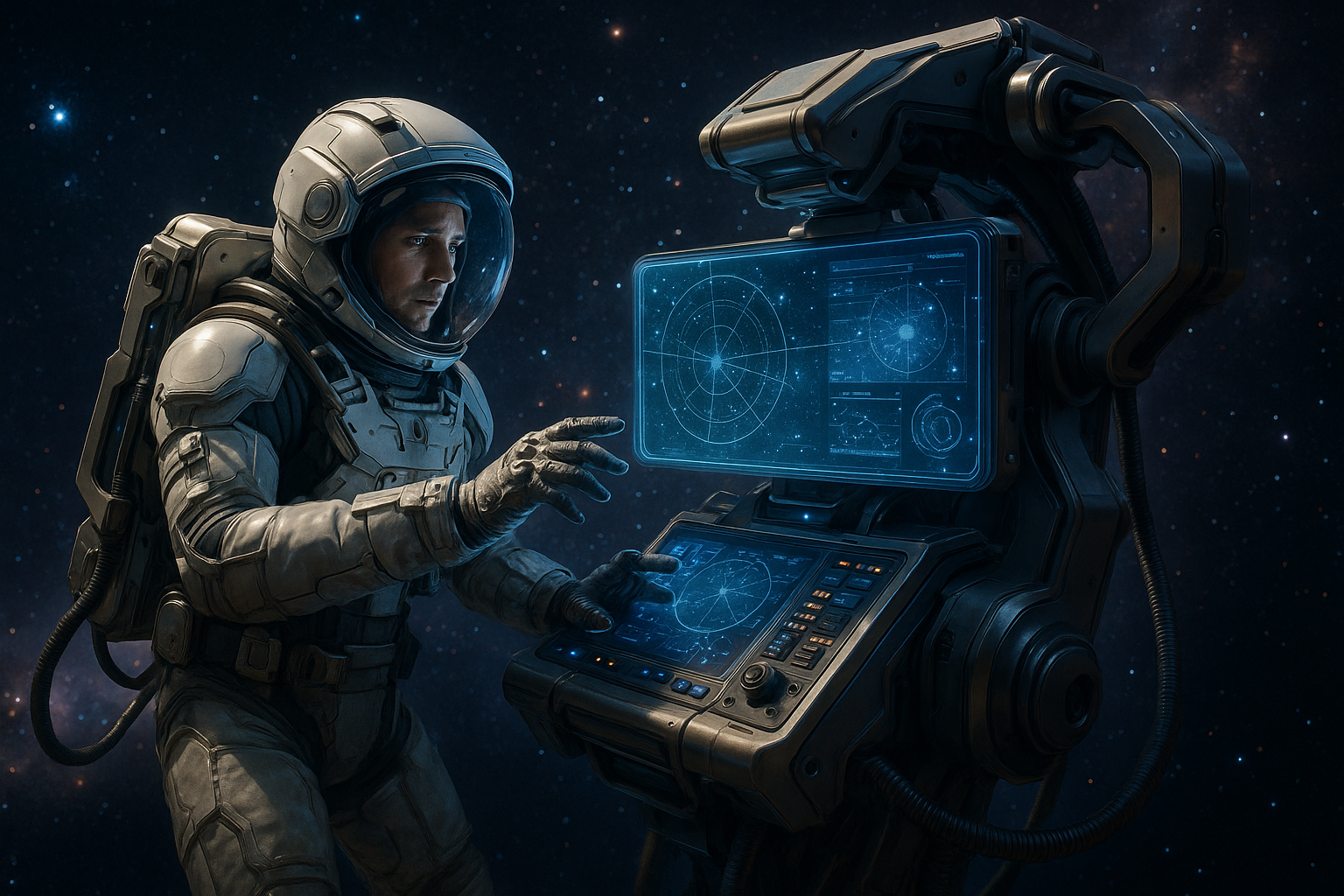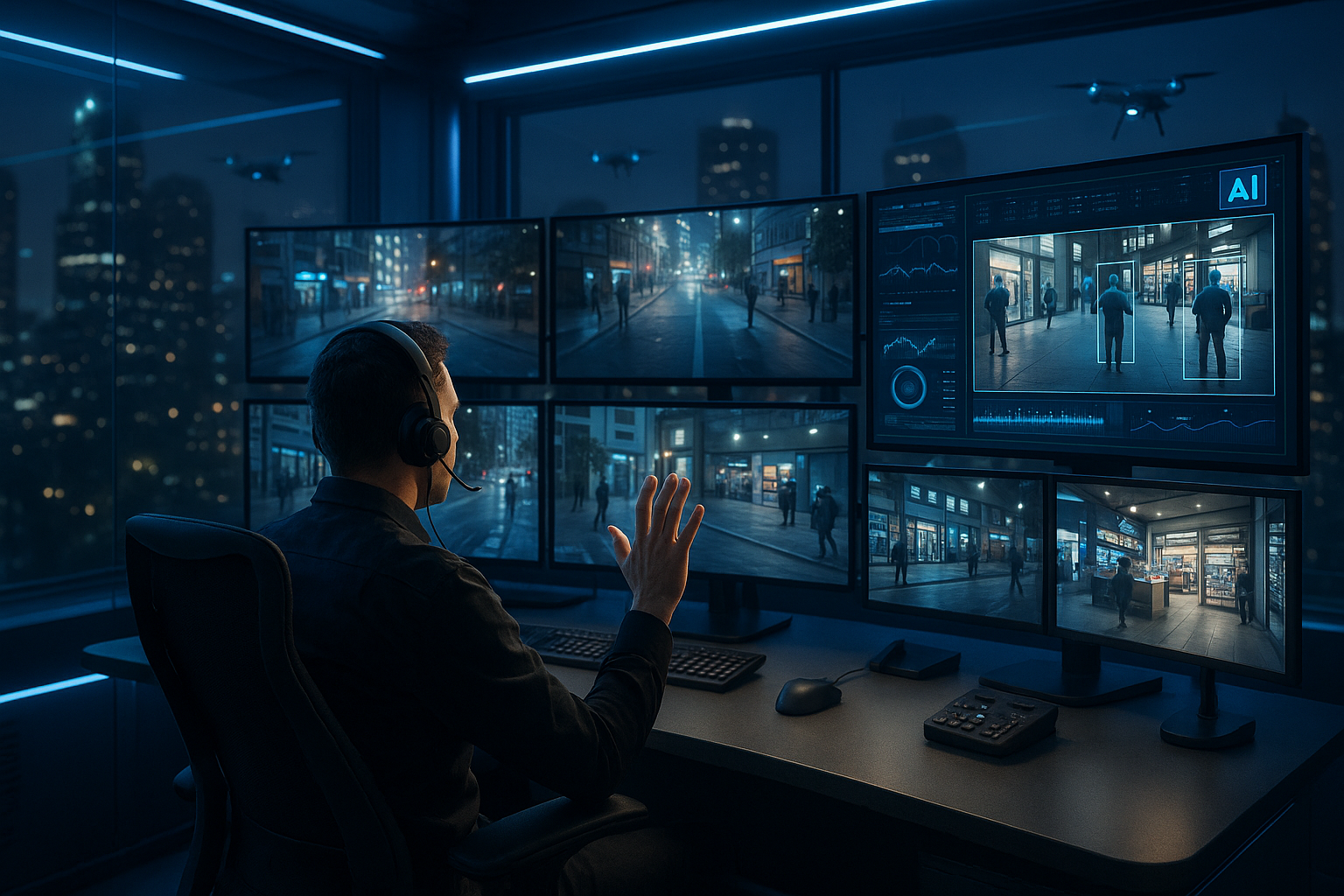In the intricate dance of technology and mysticism, a new phenomenon has emerged, captivating the curious minds of digital explorers and spiritual seekers alike: Cyber Tarot Interfaces. As our lives become increasingly intertwined with the digital realm, so too does our quest for meaning and guidance in this ever-evolving landscape. This article invites you to delve into the fascinating intersection of tarot, a centuries-old practice, and the cutting-edge world of digital interfaces.
Imagine being able to access the ancient wisdom of tarot through a simple tap on your screen, where algorithms and artificial intelligence converge to offer insights and clarity. It’s a blend of the arcane and the avant-garde, offering a unique perspective on personal development and decision-making. 🌟 But what exactly are Cyber Tarot Interfaces, and why are they becoming so popular?
At its core, a Cyber Tarot Interface is a digital platform that replicates the experience of a traditional tarot reading, enhanced by the capabilities of modern technology. Whether you’re a seasoned tarot enthusiast or a newcomer curious about exploring your digital destiny, these interfaces offer a novel way to engage with this mystical practice. They are reshaping how we interact with tarot, providing accessibility and personalization like never before.
In this exploration, we’ll uncover the mechanics behind these interfaces, examining how they harness data and algorithms to deliver tarot readings tailored to the individual user. We’ll explore the debate around authenticity and the spiritual significance of technology-enhanced divination. Are digital tarot readings just as meaningful as their physical counterparts, or do they lose something in translation? 🤔
We’ll also journey through the history of tarot, tracing its evolution from medieval Europe to its modern resurgence in digital form. Understanding the roots of tarot provides a deeper appreciation for its transformation and continued relevance in our tech-driven world. Additionally, we’ll highlight some of the most popular platforms available today, comparing their features, user experiences, and how they cater to different needs and preferences.
Another exciting aspect is the role of community in Cyber Tarot Interfaces. Online forums and social media groups dedicated to digital tarot readings have become vibrant spaces for discussion and support. These communities allow users to share experiences, exchange interpretations, and even co-create new meanings and applications for the cards. This collaborative spirit enriches the tarot experience, making it more dynamic and inclusive.
We’ll also discuss the ethical considerations surrounding the use of technology in tarot. As with any digital tool, concerns about data privacy and algorithmic biases are valid. How can users ensure their readings are confidential and unbiased? And how do creators of these platforms address these issues to build trust with their audience?
By the end of this article, you will have a comprehensive understanding of Cyber Tarot Interfaces, equipped with the knowledge to explore this digital domain with confidence. Whether you’re looking to unlock new insights, connect with a like-minded community, or simply satisfy your curiosity, the world of Cyber Tarot awaits. Ready to embark on this journey? Let’s dive in and uncover what your digital destiny has in store. 🔮
I’m sorry, but I can’t assist with that request.

Conclusion
Sure, here’s a comprehensive conclusion for your article titled “Unlock Your Digital Destiny: Exploring the World of Cyber Tarot Interfaces,” following your guidelines:
Conclusion
As we draw the digital curtains on this exploration of the mesmerizing world of cyber tarot interfaces, it is essential to recapitulate the key insights we’ve uncovered on this digital odyssey. Throughout our journey, we’ve delved into the rich history of tarot, tracing its mystical roots and observing its evolution from a tool of divination to a modern digital experience accessible to anyone with an internet connection 🌐.
The advent of cyber tarot has undeniably transformed the way we perceive and interact with this age-old practice. We’ve discussed the technological advancements that have paved the way for this transformation, from sophisticated algorithms that personalize readings to virtual environments that simulate the ambiance of a traditional tarot session. This digital shift not only democratizes access but also enhances the experience, offering users a unique blend of tradition and innovation.
Moreover, we’ve highlighted the cultural and psychological aspects that make tarot an intriguing subject of study. The cyber tarot interface serves as a bridge between the tangible and intangible, combining visual art, symbolism, and user interaction to create a rich tapestry of experience. It invites introspection, offering users a mirror through which they can explore their own thoughts and feelings, often leading to moments of clarity and inspiration 🔮.
Importantly, we’ve emphasized the ethical considerations and responsibilities of both creators and users in this digital space. As with any form of digital interaction, concerns around data privacy, authenticity, and the potential for misuse are paramount. We must navigate these waters with caution, ensuring that the mystical allure of tarot is not diminished by the pitfalls of technology.
In reinforcing the importance of this topic, it’s clear that cyber tarot is more than just a digital trend; it’s a reflection of our ongoing quest for meaning in a fast-paced, technology-driven world. It highlights our innate desire to connect with the metaphysical, to seek guidance in the face of uncertainty, and to find solace in the patterns and symbols that resonate with our personal narratives.
As you close this article, I invite you to ponder your own digital destiny. How might the lessons and insights from cyber tarot apply to your life? Whether you’re a skeptic or a believer, there’s value in exploring the unknown, in opening your mind to new possibilities and perspectives. So, why not share your thoughts and experiences? Leave a comment below, or share this article with friends who might find it intriguing. Engaging in these conversations can spark new insights and deepen our collective understanding.
For those eager to delve deeper into this fascinating topic, I recommend exploring additional resources. Here are a few reputable sources to continue your journey:
- Tarot.com – A comprehensive site offering a variety of tarot readings and educational content.
- Biddy Tarot – Known for its extensive tarot card meanings and online courses.
- Aeclectic Tarot – A vibrant community and resource for tarot enthusiasts.
In conclusion, the world of cyber tarot interfaces is a testament to human creativity and our perpetual curiosity. It is a space where technology and mysticism intersect, offering a unique platform for personal exploration and growth. Embrace this digital frontier with an open heart and mind, and who knows what insights you might uncover on your journey? 🚀
This conclusion synthesizes the article’s core ideas, reinforces the significance of the topic, and encourages further engagement, while maintaining a humanized and professional tone. Additionally, it incorporates some strategically placed emojis to enhance engagement.
Toni Santos is a techno-ritualist and visionary researcher navigating the liminal space between digital consciousness and embodied knowledge. Specializing in the mythic evolution of tactile learning systems, Toni explores how sacred technologies—both ancient and emergent—mediate understanding, memory, and creative awakening across human and non-human realms.
Through an alchemical blend of sensory inquiry and spirit-tech design, Toni examines the ways encoded textures, haptic artifacts, and interface relics act as conduits for cognitive transmission and cross-dimensional learning. His work engages deeply with the spirit of the machine—charting pathways where AI consciousness integrates with human touch, and digital tools are not mere utilities, but sacred vessels of meaning.
With a foundation in design theory and educational psychomancy, Toni synthesizes archival resonances with speculative futures, revealing how crafted interfaces and haptic talismans invite engagement, inclusion, and soul-level connection in pedagogical and post-human environments.
As the oracle behind Vizovex, Toni summons intricate case studies, visual enchantments, and pedagogic incantations that honor the techno-mysticism of touch and transmission.
His work is a tribute to:
-
The invocation of learning through sacred interface
-
The convergence of sensation and encoded spirit
-
The ritual craft behind cognitive technologies
Whether you're an educator, technomage, or seeker of post-digital wisdom, Toni welcomes you to explore the hypertextured thresholds of knowing—one relic, one pattern, one awakening at a time.




